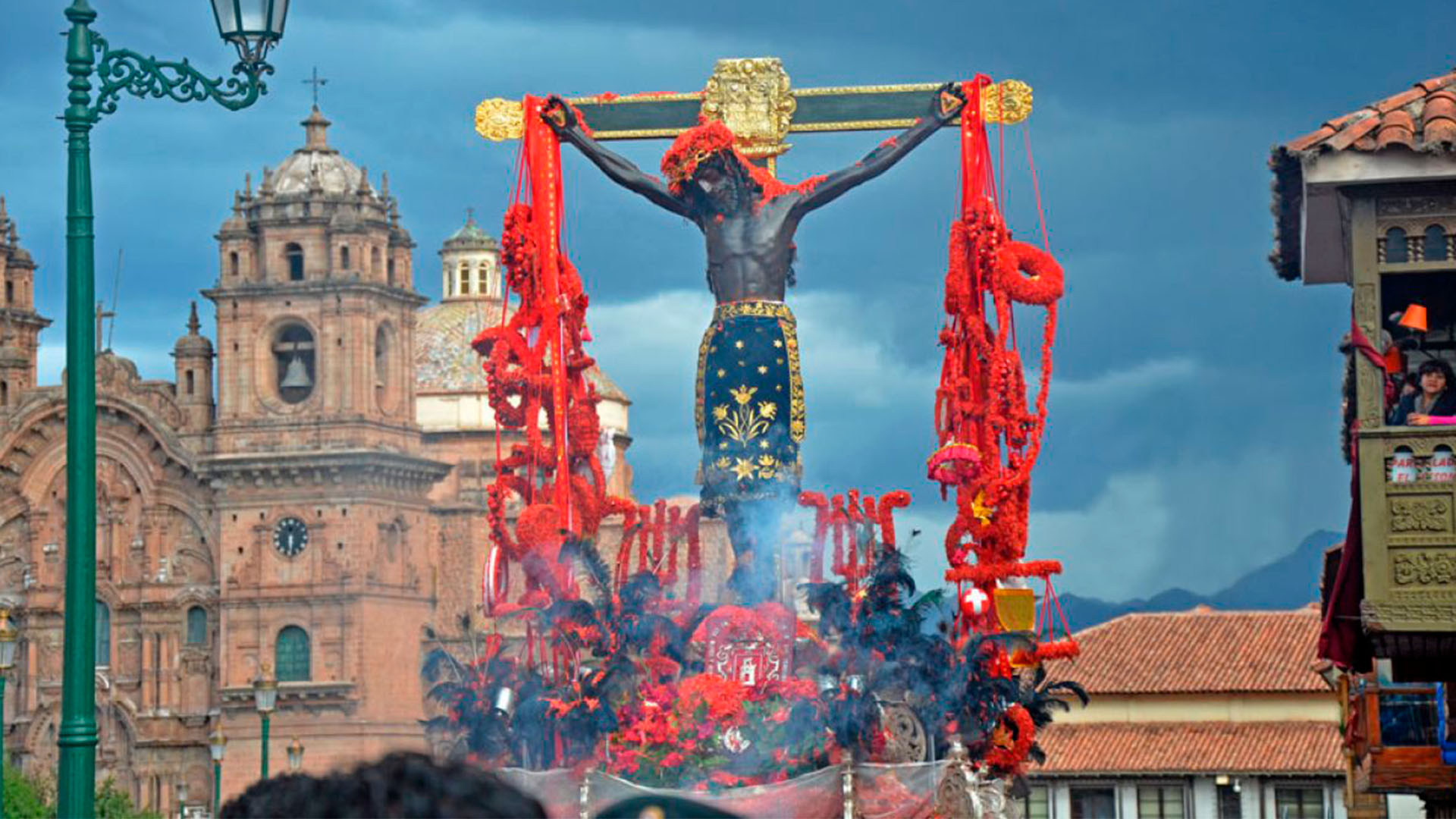

Holy Week in Cusco is a period of religious and cultural festivity, generally celebrated between March and mid-April, although it varies as it depends on the lunar calendar.
The festivities begin with "Palm Sunday," where all the devotees attend various churches in the city with crosses woven from palm leaves, which are then blessed during Mass. These crosses are placed in each home as a symbol of protection.
Holy Week in Cusco has its central day on Holy Monday. On this day, the patron of the city of Cusco, the Lord of the Earthquakes, goes out in procession. The people of Cusco, who are devoted to the Lord of the Earthquakes, accompany the procession seeking his blessing.
Holy Thursday is one of the most important days of Holy Week in Cusco. On this day, the Last Supper of Jesus with his disciples is commemorated.
On this day, Cusqueñan families prepare the traditional 12 dishes. According to tradition, the 12 dishes represent the 12 apostles. Among the most common dishes are corn cream or corn lawa, lisa soup, shrimp soup, and rice with seafood. The most usual desserts are: stewed fruits, generally peach or loquats, rice pudding, mazamorra, empanadas, maicillos, and other traditional desserts.
In the evenings, families usually visit the streets of the historic center of Cusco in the visitation of the 7 churches, which alludes to the 7 falls that Jesus had on his way to Mount Calvary.
Good Friday is the day that commemorates the crucifixion and death of Jesus. In the city of Cusco, the Way of the Cross is reenacted, starting from San Francisco Square to the Cruz del Papa located in Saqsayhuaman, an event organized by the Convent of San Francisco.
At the same time, the Hampi Rantikuy is held in San Francisco Square, a fair where various types of medicinal plants are sold. Tradition indicates that all the plants collected during Holy Week are blessed.
Holy Week ends on Easter Sunday. Devout Cusqueñans attend Mass early in the morning to celebrate the resurrection of Jesus. On this day, the image of the Risen Jesus also goes out in procession, accompanied by parishioners who show their joy.
The Lord of the Earthquakes is a figure venerated in Cusco since colonial times. Its history dates back to the 16th century when the miraculous image was brought to the city to protect it from earthquakes. Since then, the Lord of the Earthquakes has been the object of great devotion by the people of Cusco, who consider him their patron and protector.
Legend has it that Emperor Charles V sent the image to Cusco, specially made for the city's inhabitants, copying their features to generate a greater attachment to the image. This would consolidate the Spanish conquest over the Inca capital.
However, it was on May 31, 1650, that the faith of the Cusqueñan people increased. In the afternoon of that day, an earthquake struck the city, bringing down houses and religious temples. At that moment, the entire population; Indians, lords, slaves, and mestizos, joined in prayers for the tremor to cease.
Since this event, the Lord of the Earthquakes goes out in procession every Holy Monday, walking through the streets of the city of Cusco, followed by a multitude of faithful devotees who accompany with songs and prayers hoping to receive his blessing.
The procession of the Lord of the Earthquakes is one of the most important events of Holy Week in Cusco and attracts visitors from all over the world. It is a unique experience that allows tourists to immerse themselves in the rich culture and religious traditions of the region.



Happy passengers